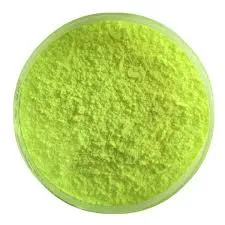Examples of Active Ingredients in Medicine
In the vast and intricate world of pharmaceuticals, active ingredients play a crucial role in determining the effectiveness and safety of medication. Active ingredients, also known as active pharmaceutical ingredients (APIs), are the components of a drug that are responsible for its therapeutic effects. Various classes of drugs contain different active ingredients, each serving a unique purpose in the treatment of various medical conditions. This article explores several common active ingredients, their uses, and their importance in medicine.
1. Acetaminophen
Acetaminophen, also known as paracetamol, is one of the most widely used active ingredients worldwide. It primarily functions as a pain reliever (analgesic) and a fever reducer (antipyretic). Found in over-the-counter medications such as Tylenol, acetaminophen is often used to treat headaches, muscle aches, arthritis, colds, and fevers. It is favored for its safety profile when taken at recommended doses, though overdosing can lead to severe liver damage.
2. Ibuprofen
Ibuprofen belongs to a class of drugs known as non-steroidal anti-inflammatory drugs (NSAIDs). It is effective in reducing inflammation, pain, and fever. Ibuprofen is commonly used for conditions like arthritis, menstrual cramps, toothaches, and lower back pain. Unlike acetaminophen, ibuprofen also alleviates inflammation, making it a preferred choice for injuries and conditions characterized by swelling. However, long-term use may lead to gastrointestinal issues or cardiovascular risks.
3. Amoxicillin
Amoxicillin is a widely prescribed antibiotic that belongs to the penicillin group. It is used to treat various bacterial infections, including those affecting the ears, nose, throat, urinary tract, and skin. Amoxicillin works by inhibiting the growth of bacteria, rendering them unable to multiply. Its broad-spectrum efficacy makes it a go-to choice for many physicians. However, it is ineffective against viral infections, highlighting the importance of accurate diagnosis in prescribing antibiotics.
4. Metformin
examples of active ingredients in medicine

Metformin is the first-line medication for managing type 2 diabetes. Its primary action is to lower blood glucose levels by decreasing liver glucose production and enhancing insulin sensitivity. Metformin not only aids in controlling blood sugar but also offers cardiovascular benefits and weight management. It has gained popularity due to its tolerability and low risk of causing hypoglycemia, or dangerously low blood sugar levels, unlike some other diabetes medications.
5. Statins
Statins, such as atorvastatin and simvastatin, are a class of drugs used to lower cholesterol levels in the blood. By inhibiting the enzyme HMG-CoA reductase, statins effectively reduce the production of cholesterol in the liver. They are commonly prescribed to individuals at risk of cardiovascular diseases, such as heart attacks and strokes. Statins have demonstrated significant benefits in reducing cholesterol, improving heart health, and decreasing the incidence of cardiovascular events.
6. Levothyroxine
Levothyroxine is a synthetic form of the thyroid hormone thyroxine (T4) and is used to treat hypothyroidism, a condition where the thyroid gland does not produce sufficient hormones. By replacing the missing hormone, levothyroxine helps regulate the body's metabolism, energy, and growth. Patients with hypothyroidism benefit from this medication, experiencing an improvement in symptoms such as fatigue, weight gain, and sensitivity to cold.
7. Omeprazole
Omeprazole is a proton pump inhibitor (PPI) widely used to treat gastroesophageal reflux disease (GERD) and peptic ulcers. It works by reducing stomach acid production, alleviating symptoms such as heartburn and indigestion. With its effectiveness in healing the lining of the stomach, omeprazole has become a staple in managing acid-related disorders. Patients are often advised about potential long-term risks associated with prolonged use, including nutrient malabsorption and increased risk of certain infections.
Conclusion
Active ingredients in medicine are foundational to pharmacology and form the basis of therapeutic interventions for various health conditions. Understanding their roles and mechanisms of action not only aids healthcare professionals in making informed prescribing decisions but also empowers patients in managing their health effectively. As medical science continues to advance, the exploration and development of new active ingredients remain essential to improving treatment outcomes and enhancing the quality of life for individuals managing health challenges.

